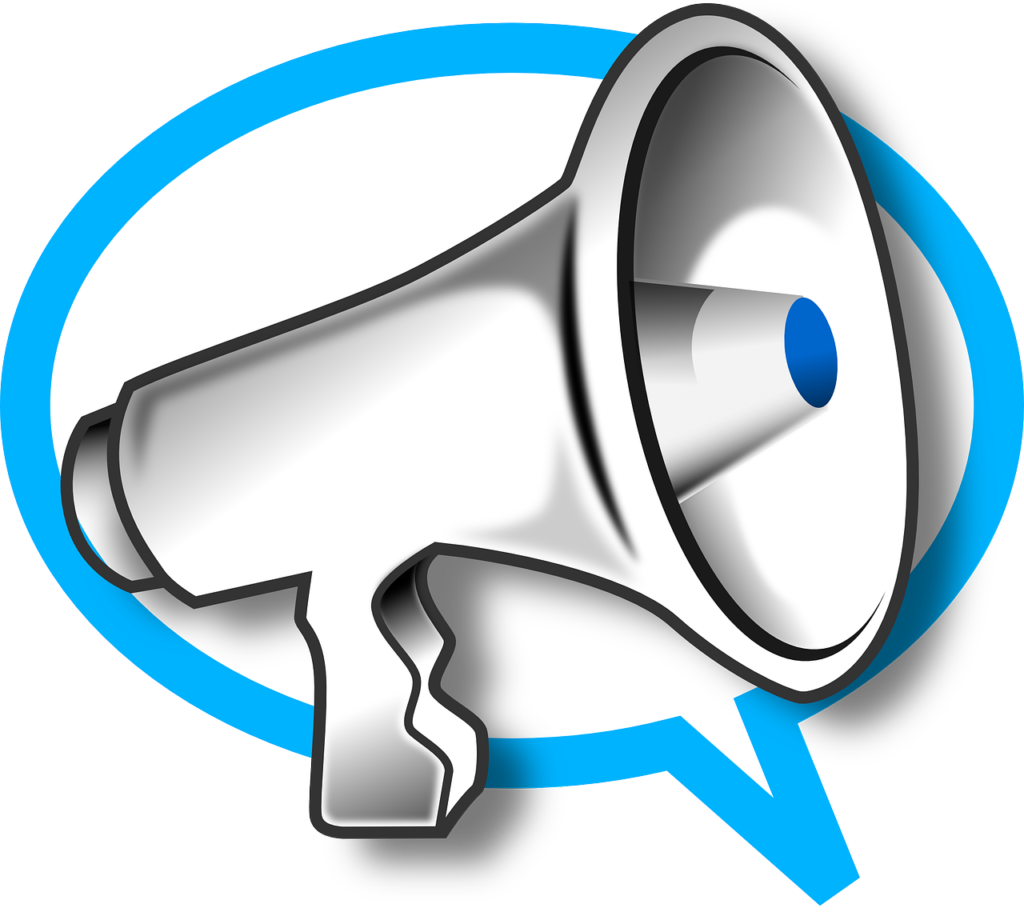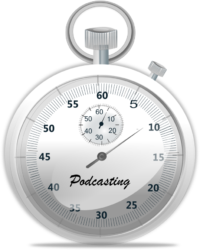
The “Advertise With Us” page is arguably the most valuable page on your radio station’s website. People who click through to this page have indicated that they are interested in giving you money. At this point, all you need to do is make it as easy as possible for them to do so. Yet so many radio stations fumble the ball here. At best, they offer a quick brag about how wonderful the station is, followed by a phone number and email address. At worst, they don’t even have an “Advertise With Us” page, just a “Contact” page.
Here are ten tips to help you create an effective “Advertise” webpage.
1. Start by making it about them, not you.
 Radio talent coaches like Valerie Geller are fond of advising on-air personalities to make their breaks about the listener. For example, “Instead of saying ‘Coming up, I’ve got Halsey tickets to give away,” they will instruct DJs to say, “Coming up, you could win tickets to see Halsey in concert.”
Radio talent coaches like Valerie Geller are fond of advising on-air personalities to make their breaks about the listener. For example, “Instead of saying ‘Coming up, I’ve got Halsey tickets to give away,” they will instruct DJs to say, “Coming up, you could win tickets to see Halsey in concert.”
This is good advice. You should apply it to your webpages as well. Too many radio stations’ “Advertise” pages start by talking about the station instead of talking about the potential client. They immediately brag about how the station is “Number one in blah blah blah…”
Stop doing this.
Instead, begin your “Advertise” page by acknowledging the challenges that the potential client is facing. For example, your page might read, “These days, it’s harder than ever for companies to get word out about their products and services. Whether you’re trying to drive foot traffic to your location, find qualified job applicants, or just raise brand awareness, you need to find a way to cut through the noise.” The purpose of the opening paragraph or two on the “Advertise” page is to convey that your station understands the needs of potential clients.
2. Explain how your station can solve their problem.
Next, explain how your radio station can help the potential client solve their problem. What can your station do to address their needs? For example, “We have helped hundreds of companies like yours achieve their goals through targeted campaigns that combine the unparalleled reach of radio with the precision of digital marketing campaigns.”
3. List your credentials.
Now it’s time to brag about your station: “We’re able to do this because we reach more people than any other medium in the Gotham area. Our on-air personalities, such at Karen and The Bug, the top-rated morning show hosts in Metropolis, are are among the most trusted influencers in the market.”
4. Include social proof.
I never make a purchase on Amazon without first reading the reviews for a product. That’s because I want to know that the thingamajig that I want to buy has worked for other people. By the same token, include quotes and logos from other clients.
5. Have a clear call to action.
Don’t bury an email address or phone number at the end of the page. Use a call to action that makes it clear what potential clients should do. This could be a big red “Email Us” button followed by a giant phone number, but I prefer a short — very short — contact form.
6. Respond to inquiries immediately.
 I once worked for a company that took the response time to leads so seriously that they would escalate an incoming lead that went unanswered. If 10 minutes passed and no salesperson had responded to it, it would get forwarded to the salesperson’s boss. If 20 minutes passed and the inquiry was still unanswered, it would go to the department head. If an hour went by without a response, the CEO would be notified.
I once worked for a company that took the response time to leads so seriously that they would escalate an incoming lead that went unanswered. If 10 minutes passed and no salesperson had responded to it, it would get forwarded to the salesperson’s boss. If 20 minutes passed and the inquiry was still unanswered, it would go to the department head. If an hour went by without a response, the CEO would be notified.
The reason for this is simple: If you can engage the potential client as soon as they’re ready to buy, you increase your chances of closing a sale. If you wait too long, they may spend their money elsewhere.
In the age of text messages, Slack notifications, and outsourced call centers, there’s little excuse for even the smallest radio station sales staffs to allow a lead to go unanswered — at least not during normal business hours. Be sure to develop a rapid-action response plan for incoming leads from your “Advertise” page.
7. Use a landing page template.
When somebody clicks through to your “Advertise With Us” page, you want them to take a specific action to generate an incoming lead. The last thing you want them to do is to click away from this page before taking that action, so don’t give them that option. Remove all other links by using a landing page template that eliminates the main menu, sidebar, and footer menu. Once somebody gets to your “Advertise” page, they should only have two options: Fill out the form or click their browser’s “Back” button.
8. Link to case studies.
I’m going to make one exception to “no other links” rule above: Take a few past examples of client success and package them into either one-page PDFs or video case studies (or better yet, both). These will show the potential clients that your station real experience doing what it says it can do.
9. Use video.
 In addition to using video for case studies, embed a short welcoming video at the top of the “Advertise” page. You have high-profile air talent and a beautiful studio; use them to your advantage by filming a short (30 to 60 seconds in length) video inviting the potential client to reach out one of your salespeople. Here are some tips for creating videos.
In addition to using video for case studies, embed a short welcoming video at the top of the “Advertise” page. You have high-profile air talent and a beautiful studio; use them to your advantage by filming a short (30 to 60 seconds in length) video inviting the potential client to reach out one of your salespeople. Here are some tips for creating videos.
10. Put a link in your site’s main menu.
As I said at the outset, the “Advertise With Us” page is the most valuable page on your site. So don’t bury the link to it in your website’s footer or in a submenu. It should have its own link in the main menu on your station’s website.
These simple steps should help you create an “Advertise With Us” webpage that will generate more leads. Take the time to review the page on your site and make adjustments today.
- A Simple Digital Treat to Thank Your Radio Listeners This Thanksgiving - November 13, 2023
- Interview Questions When Hiring Your Radio Station’s Next Digital Marketing Manager - November 6, 2023
- A Radio Conversation with ChatGPT: Part 2 – Promotions - October 30, 2023





I’ll wager that a lot of people would be interested on what the costs are to “advertise” on radio. Is it cheap? Expensive? Not that Joe and Judy listener will make that next step, but if they did talk to their employer about “advertising on KXXX” – their favorite station, it just might work. Wouldn’t you agree that giving them a peek “behind the curtain” -even into advertising would work ?
Absolutely! On the one hand, I am always annoyed when I go to a (non-radio) website and I can’t find a “Pricing” page. On the other hand, I understand that some products and services aren’t turnkey; they require customization, so the pricing can’t be listed.
It depends, then on what type of business your radio station is in. If the only question is, “How many ads do you want to buy?,” then there’s no reason why a station couldn’t list the pricing.
If, on the other hand, radio stations are capable of conducting a customer needs analysis and combining different tools — on-air ads, giveaways, appearances, digital content, social media posts, email blasts, etc. — to create a custom plan for a client, than the pricing is harder to list on the site.